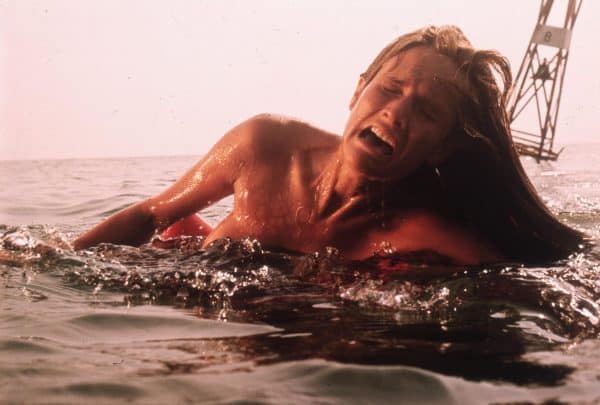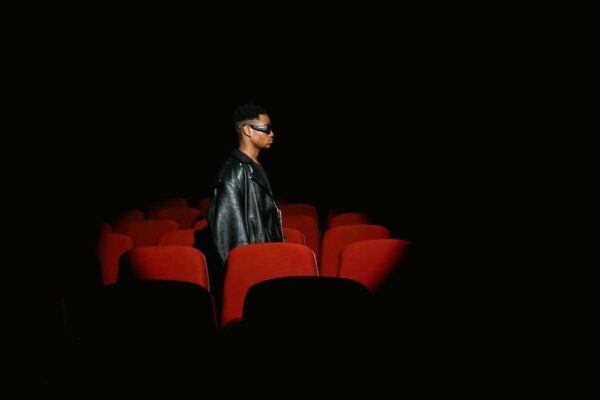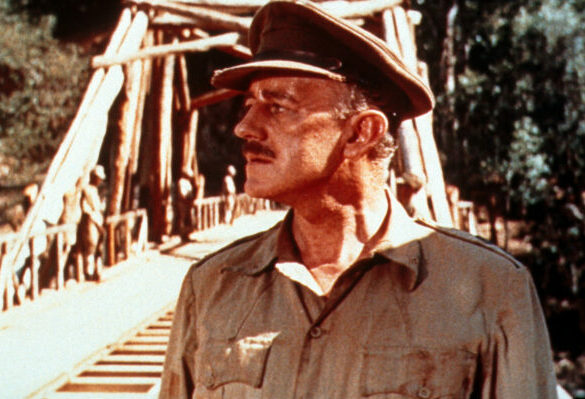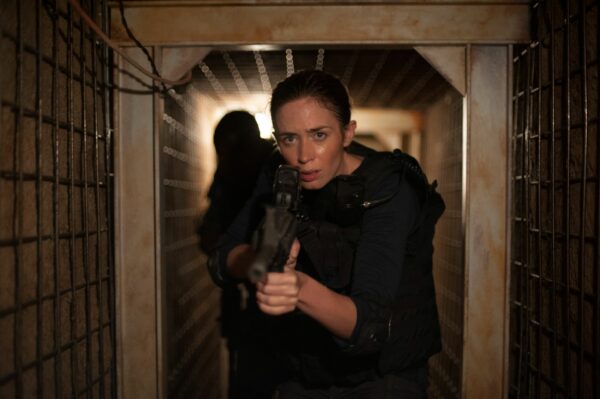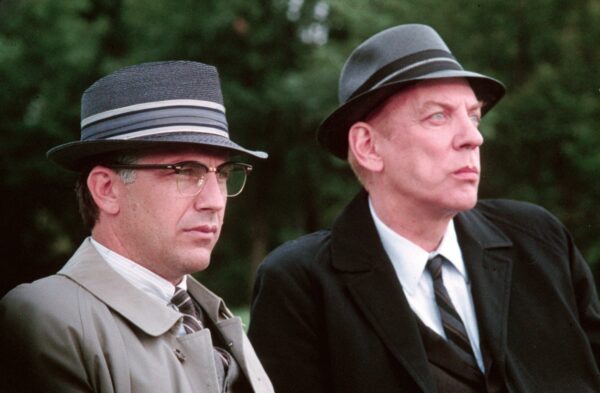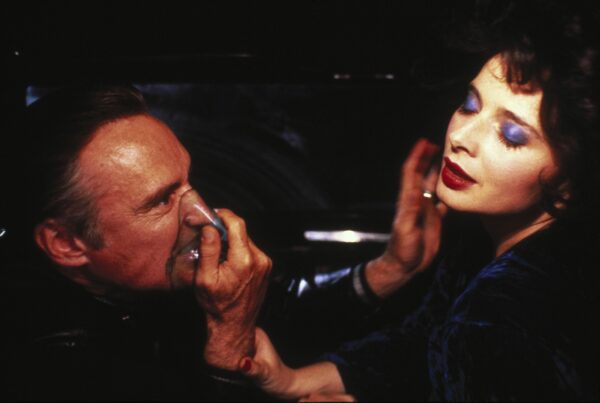
Jurassic Park is one of the most spectacular blockbusters ever made and we have 25 huge facts sabout the movie to match.
In 1993, Steven Spielberg was already acclaimed as the greatest blockbuster filmmaker of all time, his reputation cemented by classics like Jaws (1975), E.T. the Extra-Terrestrial (1982) and the Indiana Jones trilogy so, when Jurassic Park was released with boundary-pushing, groundbreaking visual effects and went on to become the highest-grossing film ever made, it probably put that accolade out of reach for anybody who might follow.
We’re heading into Jurassic Park to tell the behind the scenes story through 25 fascinating, spectacular, and fun facts about the film.
1. One of the film’s most famous scenes was problematic
One of the most iconic moments in the movie is the first time we – and the main characters – see a dinosaur, in the bracchiosaur sequence.
Laura Dern said that shooting this scene was difficult and took a long time to film because the bracchiosaur isn’t really there (obviously), so the actors had nothing to react against. Added to this, Spielberg would make up shots on the spot and nobody could keep up.
When Phil Tippett, who worked on the visual effects team, saw a CGI demo of the bracchiosaur for the first time he said to Spielberg, “You did it, you crazy son of a bitch.” That line was then given to Jeff Goldblum – his character, Dr. Ian Malcolm, says it about John Hammond (Richard Attenborough) in this sequence.
The bracchiosaur sequence
2. Speaking of Hammond, other actors were approached
John Hammond is played by the legendary British actor Richard Attenborough. Michael Crichton (who wrote the novel Jurassic Park is based on) said he saw Hammond as, “a dark Walt Disney”. Also, Clint Eastwood and Marlon Brando were considered as Hammond, and the role was offered to Sean Connery, but he said no.
3. A hurricane caused production issues
Filming took place on a Hawaiian island called Kauai. There was a disruption to production though when, 3 weeks in, the island was hit by a hurricane called Iniki. It decimated the island – winds were 120mph and took out power to the island, hitting all Jurassic Park sets. The producer was Kathleen Kennedy and she had to hitch a lift to Honolulu on a Salvation Army plane just to reach a pay phone. From there, she co-ordinated the return of the crew back to L.A. and arranged for $20,000 of relief to be transported into Kauai. Production then resumed at Universal when they returned to L.A.
When the storm hit, Spielberg grabbed Dean Cundy, the Director of Photography, and took him to film the hurricane. Some of those shots made it into the movie. So the shots where we see huge waves crashing against Isla Nublar, that’s Hurricane Iniki.
The cast and crew were moved to the ballroom of the hotel they were in but Richard Attenborough didn’t go. He just stayed in bed. When Spielberg asked him how he could do that, Attenborough said: “My dear boy, I survived the blitz!”
The Jurassic Park crew talking about Hurricane Iniki
4. The triceratops was a huge animatronic model
Following the bracchiosaur, the next major dinosaur sequence comes when the group comes across a poorly triceratops. Whereas the bracchiosaur was a CGI creation by ILM, the triceratops was entirely animatronic, made by the Stan Winston Studio. Most dinosaur scenes were shot on L.A. soundstages but Spielberg wanted the triceratops to be shot on location in Hawaii. So, to operate the triceratops, Stan Winston’s team dug a hole beneath and eight puppeteers below operated it with cables. The backside of the Triceratops had a door with four people inside it too, so it was a 12 man job to work it.
The Triceratops as we see it on the screen is brown but when first built, it was a multitude of bright colours. Purple, yellow, red, and green. And when Stan Winston saw it for the first time he said, “this looks ridiculous, make it brown.” So they did.
There was a deleted scene from this sequence too, where the triceratops had babies and there was a moment where Hammond’s grandson, Tim, rides a baby triceratops.
The triceratops sequence
5. There was a bidding war for the book
Jurassic Park is based on a novel, originally written by Michael Crichton and published in 1990. Crichton’s concept was deemed so strong by Hollywood that studios were bidding on the rights to the book before it was even published.
Warner Bros were in the running and wanted Tim Burton to direct the movie. Columbia wanted it for Richard Donner, and 20th Century Fox were keen on Joe Dante to direct.
And James Cameron wanted to make the movie too, but the rights were snapped up hours before he made his bid. Cameron said that his version, “would’ve been like Aliens (1986) with dinosaurs” and Cameron wanted Charlton Heston as Hammond, Bill Paxton as Malcolm, and Arnold Schwarzenegger as Grant.
6. Universal only had one man in mind to direct
Universal won the bidding war and, due to a successful previous relationship, wanted Steven Spielberg to direct Jurassic Park. At the time, Spielberg was actually in pre-production on another movie he was working on. That was also based on a Michael Crichton novel and called ER. (It later became the famous TV show starrring George Clooney).
Spielberg wanted his next movie to be Schindler’s List (1993) so Sid Sheinberg, Head of Universal, made him an offer. “>Make Jurassic Park and we’ll do Schindler’s List.”
7. Spielberg made Jurassic Park and Schindler’s List the same year
When production wrapped on Jurassic Park, Spielberg pretty much went straight into production on Schindler’s List. He had no break, and this meant he was working on both films at the same time. Spielberg was filming Schindler’s List during the day, and working with Michael Kahn on editing Jurassic Park at night.
Spielberg called it, “the hardest time of my filmmaking life.”
It was surely worth it,though. Jurassic Park was the highest grossing film of all time and Schindler’s List won Best Picture and Best Director at the Oscars.
Spielberg wins Best Director for Schindler’s List
8. Modern technology allowed Spielberg to be in two places at once
Spielberg wanted to keep communication channels open between himself and the team in L.A. working on Juassic Park. He was filming Schindler’s List in Poland, so rented two satellite channels through Polish television and kept them open at all times. The satellites cost $1.5m per week.
9. The lead role was originally offered to somebody else
The protagonist of the movie is Dr. Alan Grant. Many actors were in the frame for the role of Grant during casting: Kevin Costner, Dennis Quaid, Mel Gibson, Richard Dreyfuss and Robin Williams were all considered by Spielberg.
William Hurt turned the role down because, he said, “I’m not keen on the dinosaur angle.” Kurt Russell also turned it down, when he and Spielberg couldn’t agree on a salary.
And the role of Grant was offered to, and turned down by, Harrison Ford. He said it was too close to Indiana Jones, so said no.
10. Spielberg went to New Zealand for his lead
Just 3 weeks before filming started, Spielberg turned to New Zealand native Sam Neill to play Grant. Neill’s biggest movies at this point were Dead Calm (1989), The Hunt For Red October (1990) and The Piano (1993). Jurassic Park, therefore, was quite a step up for him in terms of scale.
Spielberg cast Neill as he said he saw him as bringing, “a real grounded nature to the character.”
Some say that Grant has a slightly strange accent in the film, and there’s a reason for that. Spielberg wanted Sam Neill to put on an American accent, but the actor struggled with it. So Spielberg said, “just talk in your normal voice.” Neill did, talking in his native Kiwi accent but then, after a couple more days, Spielberg said, “can you give me halfway between the two?”
Sam Neill as Dr. Alan Grant
11. Grant was based on real life dinosaur experts
The character of Grant was modelled on two real-life paleontologists called Jack Horner and Robert Bakker. They both worked as consultants on Jurassic Park, and Bakker gets mentioned in the film by Hammond’s grandson, Tim, at one point.
12. Big names were considered for other cast members too
Just like with Sam Neill as Grant, there were a lot of acting names up for the part of Dr. Ellie Sattler before Laura Dern.
Nicole Kidman, Heather Graham, Renée Zellweger, Jodie Foster, Sigourney Weaver, Michelle Pfeiffer, Ally Sheedy, Geena Davis, Daryl Hannah, Jennifer Grey, Kelly McGillis, Jamie Lee Curtis, Julia Roberts, Linda Hamilton, Sarah Jessica Parker, Bridget Fonda, Joan Cusack, and Debra Winger were all considered for the role of Ellie. And Sandra Bullock, Gwyneth Paltrow, Julianne Moore, Laura Linney, Helen Hunt, Teri Hatcher, and Liz Hurley all auditioned for the role.
But, after seeing her in Rambling Rose from 1991 – a drama set during the Great Depression for which she was Oscar-nominated – Spielberg was impressed by Laura Dern, and asked her to audition as Ellie. She did, and was cast pretty much immediately.
Jeff Goldblum plays charismatic chaos theorist Dr. Ian Malcolm and, again, lots of other names were up for the part before he was cast. Jim Carrey was considered, and Michael Keaton, Bruce Campbell, Johnny Depp, Ted Danson, Steve Guttenberg and Michael J. Fox were all screen tested.
Dr. Malcolm explains chaos theory to Dr. Sattler
13. Crichton saw himself in Malcolm
Michael Crichton said that Dr. Malcolm essentially represents his own views on genetic engineering, and what he thinks is mostly expressed by Malcolm in the dinner scene where he confronts Hammond where and says: “your scientists were so preoccupied with whether or not they could, they didn’t stop to think if they should.”
Malcolm and Hammond are polar opposites in the film in terms of their views on the Park and to show it visually, Spielberg dressed Hammond all in white, and Malcolm entirely in black.
14. An iconic funk band helped make an iconic moment
One of the most famous shots in the film is when we see a glass of water vibrating along with the footsteps of the T. Rex. Spielberg got the idea when he was listening to American funk outfit Earth, Wind and Fire in his car and the mirror vibrated. The person who worked out how to do it in the film was a member of the special effects team called Michael Lanteri. He laid guitar strings under the dashboard of the car and, when he plucked the right note, the water vibrated.
The vibrating glass of water
15. An old star of stage and screen shows up, too
In Crichton’s book, he specifically mentions that the voiceover for the audio tour is provided by Richard Kiley – a famous broadway performer in America – so Spielberg hired Kiley to do the voiceover for the tour in the film as well.
16. The T. Rex was a feat of practical effects
One of the most famous sequences in the film is when the T. Rex shows up to terrorise the group in the middle of their tour. The T. Rex was a groundbreaking marvel of effects technologoy – a blend of CGI and animatronics. The animatronic model was made by the Stan Winston Studio, was about 25ft high and weighed approx. 15,000 lbs, (about 7 tons). They had to raise the studio roof to make room for it. It was remote-controlled, and when the T. Rex got wet in the rain in this sequence, it stopped working, so there were big delays to filming where it needed to be fixed.
The animatronic caused other problems as well. Producer Kathleen Kennedy said that they had to have flashing lights on set alerting people when the T. Rex was about to be turned on because if it moved its head and hit somebody it might kill them. And sometimes, it would move by itself. Kennedy said:
“We’d be eating lunch, and all of a sudden the T. Rex would come alive. At first we didn’t know what was happening, and then we realized it was the rain. You’d hear people start screaming.”
The T. Rex sequence in the film
17. Basic Instinct inspired Spielberg
An important character in terms of the plot is computer programmer Dennis Nedry who, in attempting to steal dinosaur embryos for profit, is killed by a Dilophosaurus when he finds himself lost in the park.
Nedry is played by Wayne Knight, and Spielberg cast Knight after seeing him in Paul Verhoeven’s erotic thriller Basic Instinct (1992). When Spielberg saw Basic Instinct, he thought Knight was perfect for Nedry and said, “I waited for the credits to roll and wrote his name down”. Charlie Sheen was also considered to play Nedry.
Dennis’ demise in the Dilophosaurus sequence
18. The story could have been very different
Michael Crichton’s first idea was to write a screenplay about a Pterodactyl being cloned and brought to life, and it would be told from the point of view of a small child. Crichton has a team of people who review his drafts and all 5 of them said they didn’t like the Pterordactyl idea, so he changed it to be about a college student who accidentally creates a dinosaur. They didn’t like that either, so Crichton rewrote it again to be more like his own movie Westworld (1973) – a theme park where everything goes wrong.
The first person Spielberg hired to write the screenplay was Malia Scotch Marmo. She’d written Hook (1991) for Spielberg and she wrote a first draft of Jurassic Park. Her draft was very different to the movie, it had the T. Rex in the opening sequence and left Malcolm out of the film altogether.
Spielberg wasn’t impressed with the script so started again, with Crichton writing. Spielberg liked Crichton’s version but a Spielberg custom is that he usually hires a second writer to look over his scripts to see if they can make improvements. In this case, the person he brought in to do that was David Koepp.
And Koepp changed a fair bit. He trimmed character backstories because he thought they were, “boring and unnecessary,” in his words. And it was he who introduced Malcolm flirting with Ellie and Grant’s arc of becoming a father-figure to Lex and Tim.
19. The film was a pioneer for CGI effects
The CGI work in Jurassic Park – provided by ILM – was groundbreaking at the time and raised the bar for visual effects. Originally though, Spielberg did not want to use digital effects because he was worried the technology was not ready yet.
Instead, Spielberg wanted to use GoMotion to create the effect of the dinosaurs moving. GoMotion was an evolution of StopMotion that looks more realistic and ILM effects expert Phil Tippett was hired to do it, along with two ILM animators called Mark Dippe and Steve ‘Spaz’ Williams.
Dippe and Williams were both keen on CGI but the Creative Director at ILM, Dennis Muren, told them no, it had to be GoMotion. They were so convinced he was wrong that Spaz Williams created a CGI animation of a walking T. Rex skeleton behind Muren’s back. Then, on the day that Kathleen Kennedy was due to visit the ILM studio and see how they were getting on, Williams had the T. Rex animation playing on the main screen in the room. When Kennedy saw it she asked what it was and Muren just had to go along with it and said, “Oh, it’s something the guys have been working on,” even though he’d never seen it, either.
Kennedy reported what she’d seen to Spielberg and said it was mind-blowing. And, as punishment, Dennis Muren made sure Spaz Williams was not invited to the screening where his animation was shown to Spielberg.
Spielberg loved the T. Rex that Steve Williams created and instantly changed his mind to move from GoMotion to CGI. And, on seeing the CGI in action, Phil Tippett turned to Spielberg and said, “I think we’re extinct” which is another line that made it into the movie when Malcolm says the same to Grant and Ellie.
20. A cast member was hired because of their lung capacity
Hammond’s grandadaughter, Lex, was played by Ariana Richards, who was just 13 years old at the time. Lex spends quite a lot of the film screaming, and Richards said her audition consisted of yelling into a camera:
“Steven had watched a few girls on tape that day, and I was the only one who ended up waking his wife off the couch, and she came running through the hallway to see if the kids were all right.”
21. Spielberg gave the cast a gift
After filming wrapped, Spielberg gave all of the cast a signed velociraptor model. And, apparently, Laura Dern, Jeff Goldblum, Ariana Richards and Joseph Mazzello have those models displayed in their homes to this day.
22. The ending of the film was originally different
In the script, the end of the film didn’t originally have the T. Rex showing up and saving the group from the velociraptors, but Spielberg thought the audience would hate him if we didn’t see the T. Rex one last time, so he had the ending changed.
The ending that was originally in the script was that the T. Rex skeleton that’s in the entrance was hooked up to pulleys, and Grant used the pulleys to move the skeleton’s head and feet to crush the raptors.
The T. Rex takes on the ‘raptors
23. Jurssic Park was the highest-grossing movie ever
On a budget of $63m, the film grossed a whopping $913m at the box office to become the highest-grossing movie ever and, after a re-release, became the first film to top $1bn and the first to top $500m at the international box office.
David Koepp tells a story about the release of the movie:
“I was in New York and I walked to the Ziegfeld Theatre to see how it was doing. The guy comes out and says to the line, ‘Ladies and gentlemen, the seven o’clock show of Jurassic Park is sold out. Also, the ten o’clock show is sold out. And also Saturday night’s seven and ten o’clock shows are sold out.’ And I was like, ‘I’m not an expert, but I think this is very good.'”
Also, by having stakes in the film’s profits, Spielberg made $250 million from Jurassic Park. To this day, that is the largest sum any one person has made from a single movie.
24. Jurassic Park had a big influence, even outside the movie industry
Away from filmmaking, Jurassic Park generated so much interest in dinosaurs that the study of paleontology had a record increase in students in the years following its release, and a leading paleontologist called Steve Bursette said:
“Jurassic Park is one of the best things to ever happen to paleontology. This newer image of dinosaurs as an active, energetic, and intelligent animal was so different than the dinosaurs I read about in my books in school, and that was great.”
25. A real-life Jurassic Park would be pretty expensive
The online publication Fandango did some research to work out how much a real-life Jurassic Park would cost.
According to Fandango, it would cost $1.5 billion to build the park itself. $10 billion to buy an island off the coast of Costa Rica the size of Isla Nublar. It would be $26 million for research, harvesting the dinosaur DNA, and cloning the dinosaurs. $32m per day for overheads like employees and operations, and $200m per year for dinosaur food.
So it would cost $23.4bn to create the park, and $12bn per year to run it. Setting aside the practicialities of cloning extinct animals, the cost alone may prevent a real life Jurassic Park. Shame.
And we’re at the end – 25 fascinating and fun facts about Spielberg’s blockbuster classic. Please share on your social platforms, and subscribe to our YouTube channel for lots of great video content.
You may also like...
The beginning of a beautiful friendship
Stay up-to-date with all things All The Right Movies by signing up for our e-newsletter.
